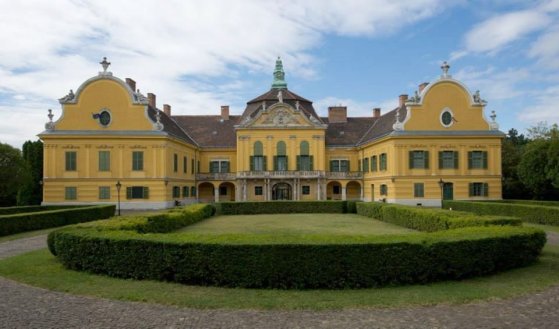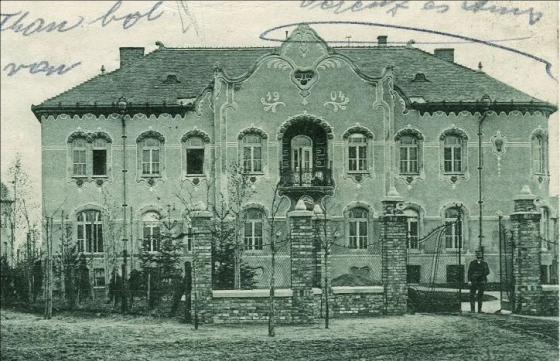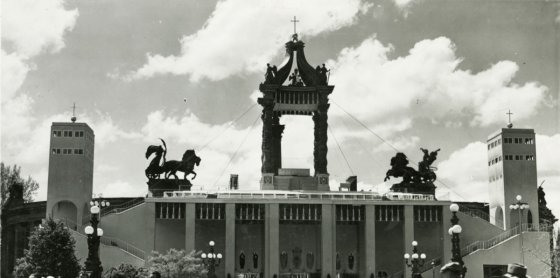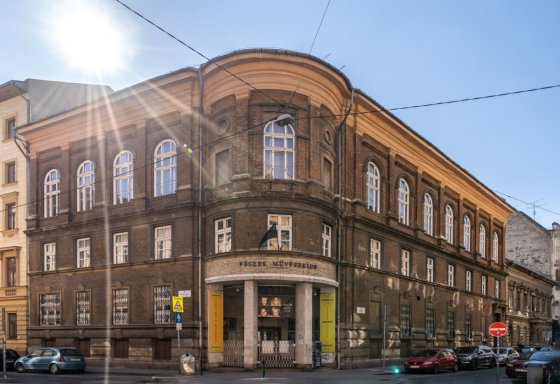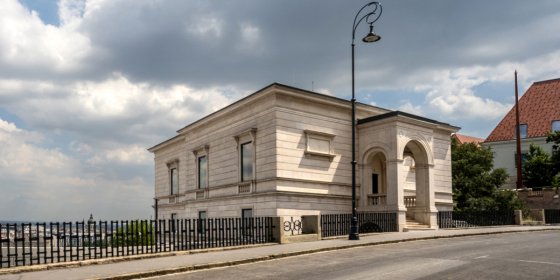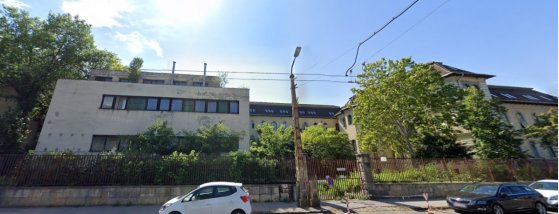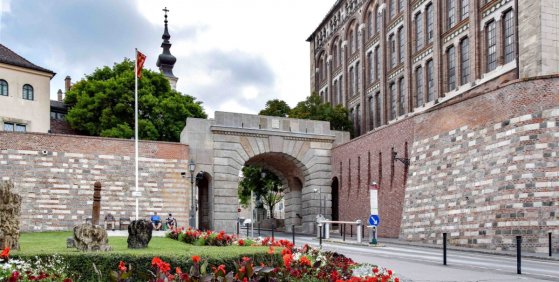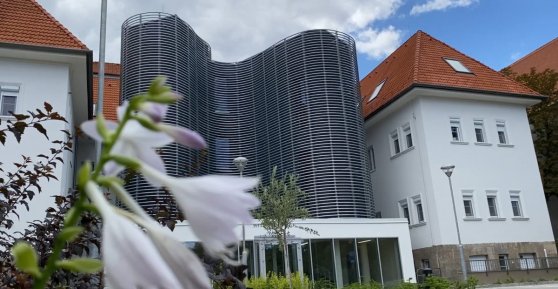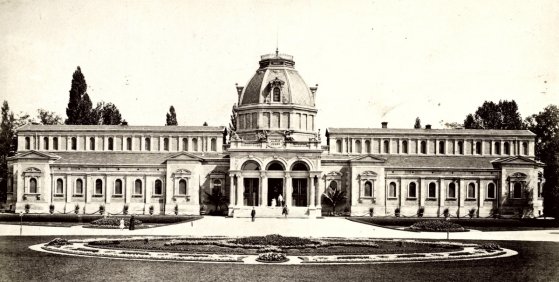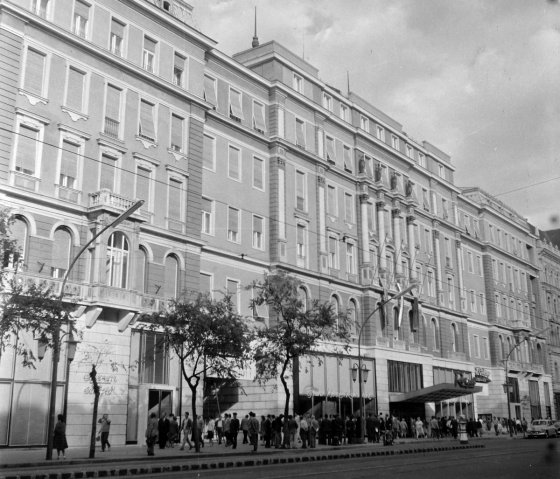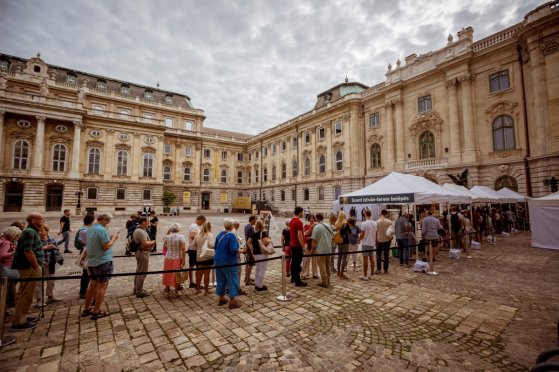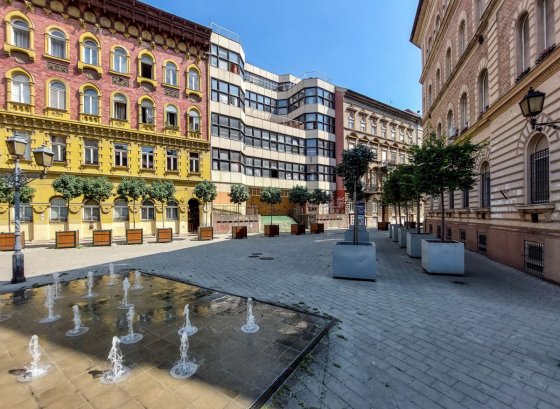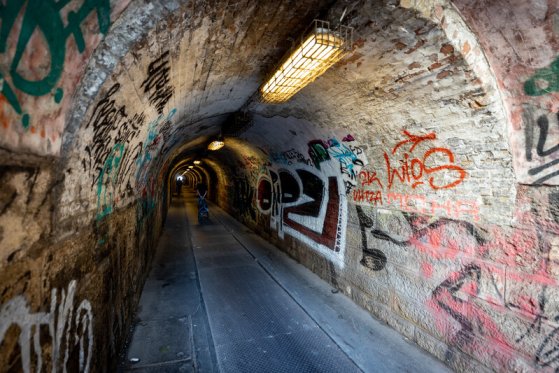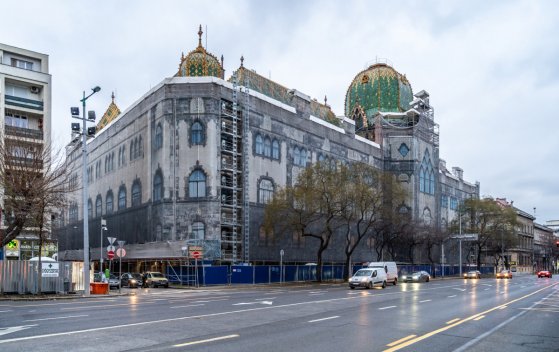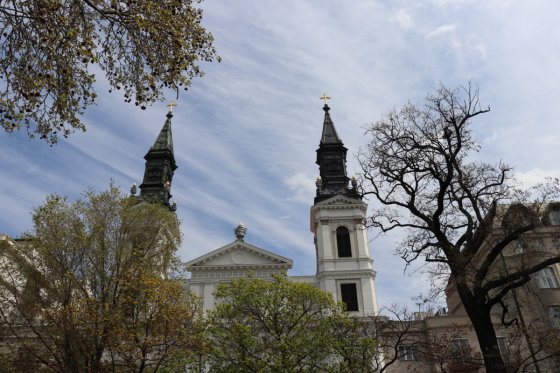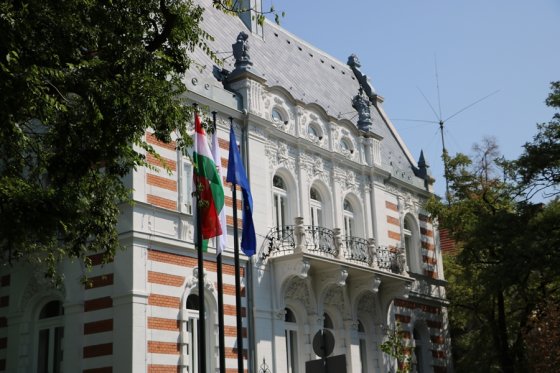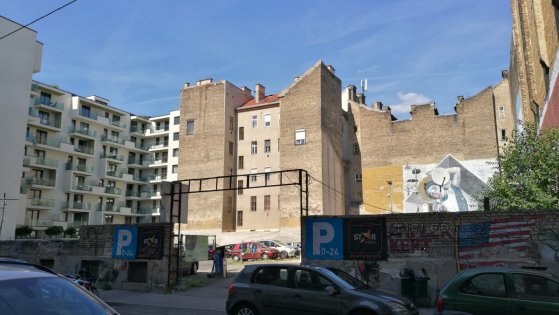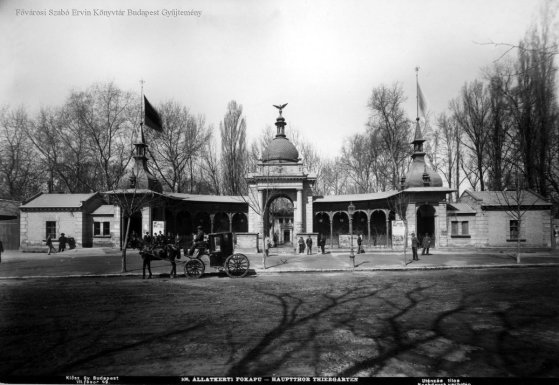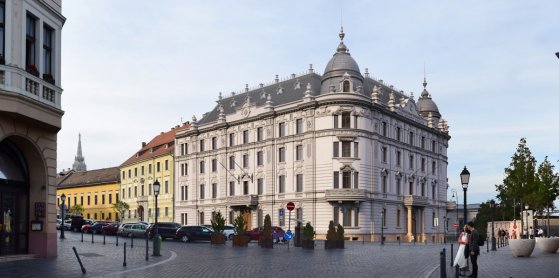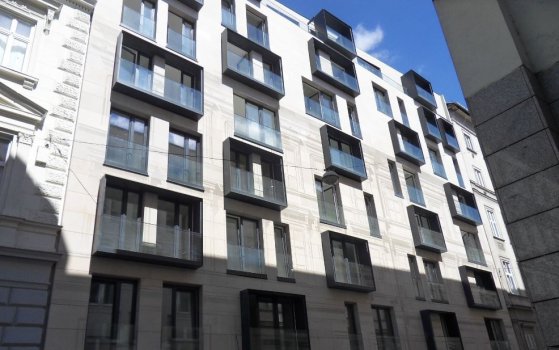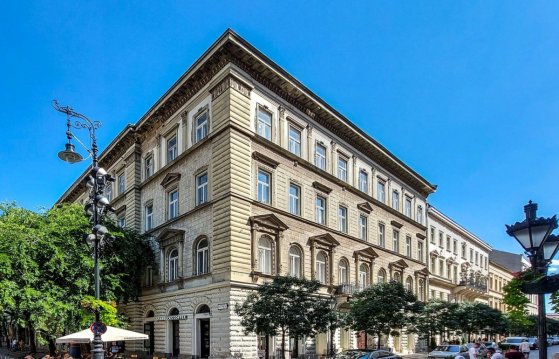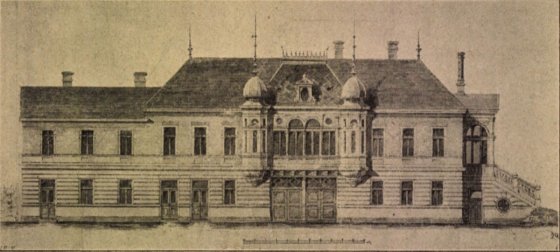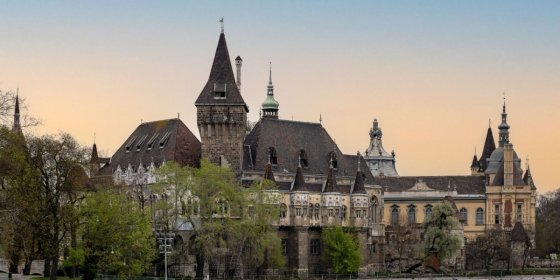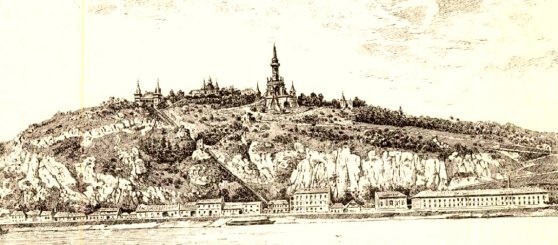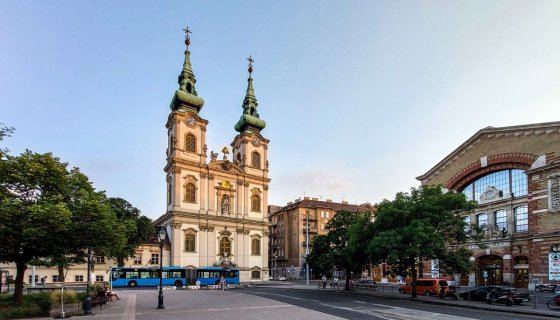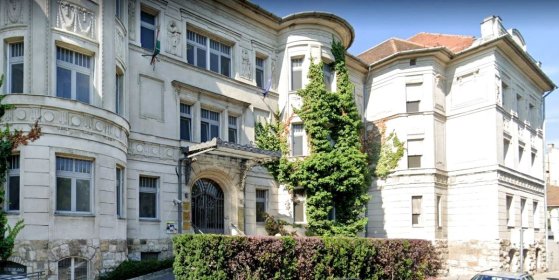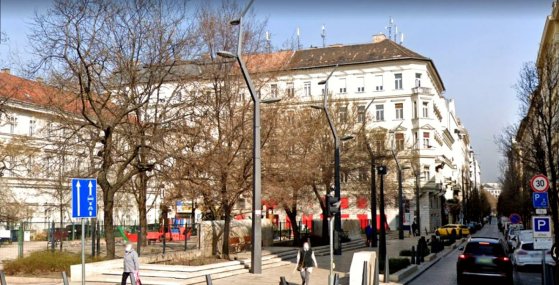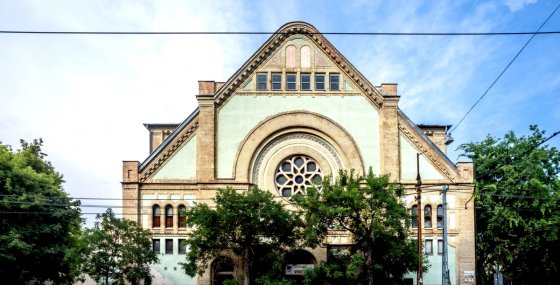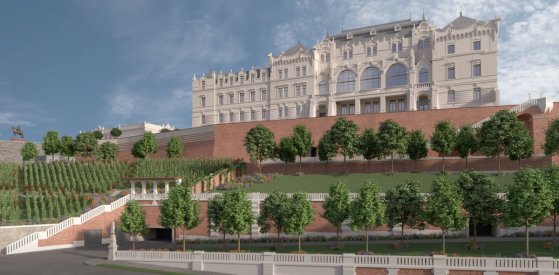 The „intertwined history” of the bridges and the city of Budapest
Which ideas and events have shaped the fate of bridges of Budapest and the cityscape? Alongside many other interesting facts, this question is also answered this newly published book by the Budapest City Archives, which introduces the history of bridges in Budapest.
The „intertwined history” of the bridges and the city of Budapest
Which ideas and events have shaped the fate of bridges of Budapest and the cityscape? Alongside many other interesting facts, this question is also answered this newly published book by the Budapest City Archives, which introduces the history of bridges in Budapest.
Architecture
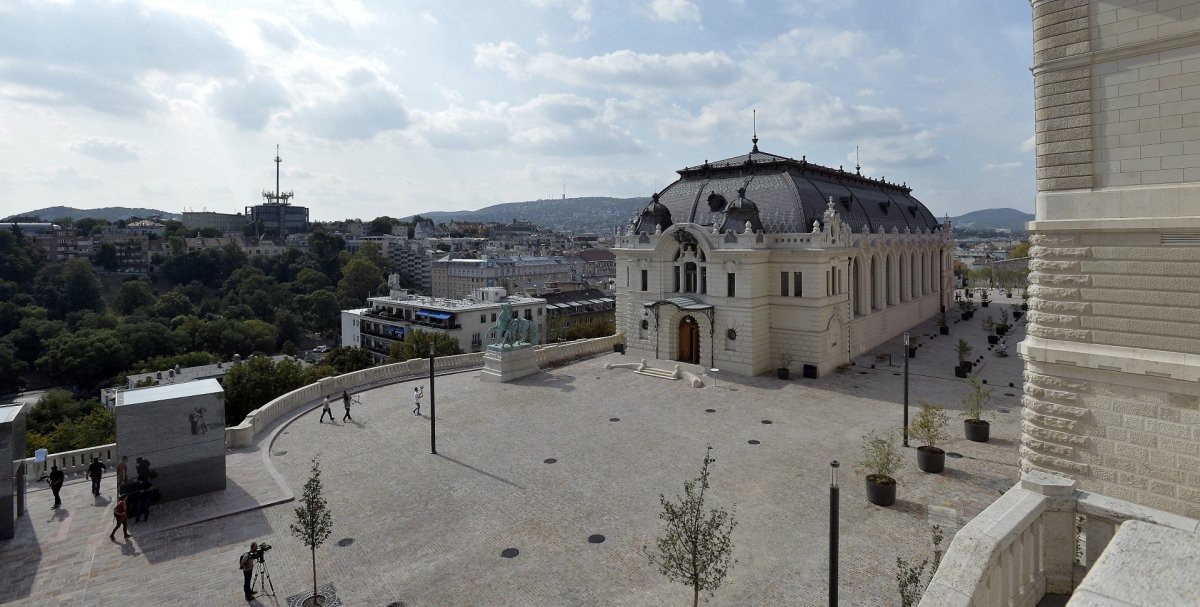 The Rider's Garden and the Tickler's Courtyard in Buda Castle are finished
The Rider's Garden and the Tickler's Courtyard in Buda Castle are finished
September 15, 2021 at 9:00 AM
From this weekend, anyone can see the rebuilt Buda Castle Riding School, the Chico Courtyard and the Stöckl Staircase. During the authentic reconstruction, the original turn-of-the-century plans by Alajos Hauszmann were faithfully followed, but the inside of the Riding Hall was equipped with the most modern technical solutions.
András Mayerhoffer, the creator of the Hungarian Baroque style, died 250 years ago
September 12, 2021 at 9:30 AM
András Mayerhoffer, born in Salzburg, is one of the leading figures of Baroque-Rococo architecture in Hungary. He is also known as the creator of the so-called Grassalkovich or Gödöllő style. The works of the master builder and architect, who died 250 years ago, such as the first two-towered Catholic Church in Pest or the former Péterffy Palace in Piarista Street - are still defining elements of Budapest's cityscape.
Monument research on the Art Nouveau hospital building
September 10, 2021 at 9:30 AM
Most of the people living in the area still mention the North Pest Hospital as a former Russian hospital, whose buildings are located in Pestújhely, on a landscaped area of more than 7 hectares. The institution was originally built as a mental hospital in the Art Nouveau style. The plans for the renovation of the institution and the monument research were recently carried out by the owner, the 15th District Local Council.
A little Rome in Budapest - The main altar of St Peter's Basilica was built in Heroes' Square in 1938
September 8, 2021 at 10:00 AM
The 52nd International Eucharistic Congress is taking place in Budapest these days, which one of the largest events in the Catholic Church. It is always a great honour for the city to host the event, and Budapest is lucky enough to host it for the second time. For the first time, in 1938, the organisers expressed their gratitude to the Vatican for the opportunity by building the main altar of St Peter's Basilica in Heroes' Square.
The famous Fészek Klub opened 120 years ago
September 7, 2021 at 9:00 AM
The Festők, Építészek, Szobrászok, Zenészek, Énekesek és Komédiások Klubja [Painters, Architects, Sculptors, Musicians, Singers and Comedians Club] or the Fészek Klub opened 120 years ago, on 7 September 1901, on the corner of Kertész Street and Dob Street. The legendary club has been a popular and beloved meeting place for the arts scene for decades, but is now more of an events venue. Just like the club scene of the old days, the original elegant Art Nouveau building and its lavish décor are a thing of the past.
The renovated Lónyay-Hatvany villa on the Buda Várhegy was inaugurated
September 5, 2021 at 10:00 AM
The villa, originally designed by Miklós Ybl and built in 1872, was bombed, burnt down and demolished during the Second World War. It was completely rebuilt after the turn of the millennium, but has stood empty for the last few years. Recently renovated for the Lajos Batthyány Foundation, the building will serve as the future headquarters of the organisation.
Tender for the design of the Hungarian Museum of Architecture
September 3, 2021 at 3:00 PM
On the site of the former BM-hospital at the corner of Bajza street and Városligeti fasor, the Hungarian Museum of Architecture and Documentation Centre for Historic Monuments is being formed. After demolition work was completed in the summer, the site is now reduced to two historicised sanatorium buildings. The planned building will be smaller than the demolished houses, leaving a large green area on the site.
The newest Vienna Gate is eighty-five years old
September 2, 2021 at 9:00 AM
Eighty-five years ago, in 1936 the Vienna Gate of the Buda Castle was rebuilt. The plan had already been conceived six years earlier, but because of the economic crisis the financial backing could only be secured for that time. The occasion for the construction was the two hundred and fiftieth anniversary of the recapture of Buda, which was on 2 September 1686.
New towers on Amerikai Road - The main building of the Mazsihisz Charity Hospital was renovated
September 1, 2021 at 10:00 AM
The new main building of the Mazsihisz Charity Hospital [Szeretetkórház] in Budapest on Amerikai Road was renovated. It was originally built in 1914 and returned to the community in 1994 from the Uzsoki Street Hospital. The renovated 2300 square metre building also got distinctive towers.
Diana, Margit, Erzsébet and Hungária - Forgotten baths from the past of Budapest
August 29, 2021 at 8:30 AM
This summer is slowly coming to an end, and the sudden cooler weather is no longer good for going to the beach. Fortunately, Budapest also has many baths, which we can visit even in cooler weather; it is enough to think of Széchenyi, Rudas or Gellért. Unfortunately, there are also a good number of baths that we can no longer enjoy today, even though they were architecturally significant as well. Here are 3 + 1 baths from the past of Budapest!
The luxury hotel was designed for tourists from the West - the Royal reopened 60 years ago
August 25, 2021 at 1:00 PM
The former legendary hotels of Budapest were almost completely destroyed in the Second World War and in the 1950s, and in the Rákosi era, no money was spent on building luxury hotels in the country, as there was no solvent demand for it. The situation changed after the defeat of the revolution and war of independence of 1956: tourists from the West and the currency they spent here became important to the country’s new leadership. Large-scale hotel developments began, among them one of the first was rebuilding the former luxury hotel, Royal, which reopened in August 1961.
Thousands were curious about the biggest architectural attraction of 2021
August 25, 2021 at 10:00 AM
Probably the biggest architectural attraction of 2021 is the reconstruction of the southern connecting wing of the Buda Castle and the re-creation of the St. Stephen's Hall. On the festive weekend of 20 August, an unprecedented crowd waited at the palace courtyard to enter the now handed over part of the building. Krisztina Sikota, Deputy Director General of Tourism and Culture of the Várkapitányság, evaluated the events for our site.
The tumultuous fate of the small Pompidou in Pest - The former building of the Almássy Square Leisure Center is transformed into a hotel
August 24, 2021 at 9:00 AM
The Almássy Square Leisure Center has been sleeping its (second) Sleeping Beauty dream for almost a decade. The former popular cultural institution was sold by the municipality of Erzsébetváros in 2007 and although the hotel building plans at the time did not materialize, an application for a building permit was recently submitted to expand and transform the building, 35 years ago known as the small Pompidou in Pest, to a hotel.
Budapest's oldest and most neglected pedestrian tunnel is finally being renovated
August 17, 2021 at 4:30 PM
The pedestrian underpass built in 1874 connecting Bajza Street in the 6th District with Bulcsú Street in the 13th District, which runs from the Nyugati railway station, has been in extremely poor condition for decades, and is also dirty and dangerous. However, the underpass, almost the same age as the capital, is now being renovated, so it will be closed to traffic on 23 August and will only reopen in the autumn.
The long-awaited reconstruction of the Museum of Applied Arts can begin
August 16, 2021 at 6:00 PM
During the works, the decorations of the beautiful Art Nouveau palace designed by Ödön Lechner will be restored inside and out, the foundation of the building will be strengthened, several internal partitions and courtyard annexes will be demolished, as well as the museum's 21-meter-high chimney.
One tower or two? - The largest Orthodox church in Hungary was consecrated 220 years ago
August 15, 2021 at 7:30 PM
The tower of a church always has a special significance. It is an important part of the cityscape, it helps with orientation and of course a signal to the community as well. The tower (or towers) of the Greek Orthodox Church of Our Lady in Petőfi Square not only define the cityscape, but they are also signals in the history of the 220-year-old church.
The hospital specialist architect - Vilmos Freund was born 175 years ago
August 15, 2021 at 10:00 AM
The architectural versatility of Vilmos Freund, born 175 years ago, is characterized by the fact that in addition to the magnificent tenement houses and villas of Andrássy Avenue, office and sacred buildings, as well as several hospital buildings, are associated with his name. That is why he is also referred to as a hospital specialist. It is interesting to know that the literature knows only one of his work that was not built in the capital: the palace of the Adria Hungarian Shipping Company in Rijeka.
Hotel to be built on Kertész Street vacant lot
August 11, 2021 at 9:30 AM
The 19th-century residential houses in the 7th District, 21 and 23 Kertész Street were sold in 2004 by the management of the 7th District in a case known as the Erzsébetváros real estate panama. Both buildings were demolished. Apartments were designed in their place, but the idea did not materialise. Now it turns out that a 254-room hotel is being built on the plot that has been empty for 15 years and has been operating as a car park.
The Pest Zoo opened in the City Park 155 years ago
August 8, 2021 at 11:30 AM
People have always been curious about special, exotic animals: the stuntmen who appeared in Pest-Buda in the 18th century and travelled with an army of animals have always enjoyed great popularity. However, the real zoo had to wait a long time: it opened its doors on 9 August 1866. The beautiful park quickly became popular among the citizens of Pestbuda, where they could see kangaroos, parrots and reindeers. Giraffes did not arrive at the Zoo until 1868, through the intervention of Queen Elisabeth (Empress Elisabeth of Austria).
Reconstruction of the former Red Cross headquarters begins in Buda Castle
August 4, 2021 at 10:00 AM
During the reconstruction of the building, which was built for the Red Cross Society and then housed the Ministry of Foreign Affairs and was demolished after the Second World War, it will faithfully follow the original corner dome in its outer features. However, the interior of the building will house modern technology. The partial renovation of the neighbouring Batthyány Palace is also being carried out.
New residential building completed on Erkel Street 5 years after the demolition of the classicist building
August 3, 2021 at 12:00 PM
Although during urban development it is often the case that some of the old buildings are demolished and replaced by new ones, it is very painful to lose a value that is unique or rare and to replace it with a building which has not got the same values, in addition, the more or less uniform street view is sacrificed as well. The new residential building was completed five years after the demolition of the classicist residential building at 18 Erkel Street in the 9th district. Pestbuda now shows the readers what it turned out to be.
The Neo-Renaissance facade hides a classicist interior in Hercegprímás Street, Lipótváros
July 31, 2021 at 10:00 AM
The house, built in 1844 in the classicist style by Hild József, remodelled in the neo-Renaissance style at the beginning of the 20th century, is now one of the most beautiful buildings in the square surrounding St. Stephen's Basilica at 7 Hercegprímás Street. The facade itself is special with the decorations alternating from floor to floor, and the cosy inner courtyard has retained its classicist touches. What overshadows the history of the palace is the history of the former owners.
Ferenc Novák designed first an electric cogwheel railway and then a hydraulic funicular on Gellért Hill
July 29, 2021 at 2:00 PM
In the last decade of the 19th century, architect Ferenc Novák presented to the public the plan of the Gellért Hill funicular, which was connected with the intention to demolish the Citadel. According to Novák's idea, not only a funicular would have been built on Gellért Hill, but also a lookout, an illuminated statue and the National Pantheon as a millennium monument. The architect would have built first an electric cogwheel railway and then a hydraulic funicular, for which he also received permits. Yet his dream did not come true.
Vajdahunyad Castle was rebuilt for The Museum and Library of Hungarian Agriculture, founded 125 years ago
July 27, 2021 at 9:00 AM
Vajdahunyad Castle, located on the former Széchenyi Island of the Városliget Lake, has been very popular since 1896. With its special appearance and unique atmosphere, it attracts tens of thousands of visitors. Walking between its walls and characteristic parts of the building, one can travel a long way in time and space from the Highlands to Transylvania, from the Romanesque to the Baroque period. And the walls hide one of Europe’s largest agricultural collections and museums, celebrating its 125th anniversary this year.
Several people have already planned a funicular to Gellért Hill, but neither the cogwheel nor the steam cable car has been built
July 26, 2021 at 2:00 PM
What could be the explanation for the fact that despite the approved plans since the second half of the 19th century, the construction of a Gellért Hill funicular has never started? Guido Fuchs already in 1884, then in the 1890s Mór Balázs, Vince Ede Miller and Ferenc Novák put their own ideas on the table. However, none of them came close to implementation.
The sanctuary of the St. Anne's Church in Batthyány Square was built 275 years ago
July 24, 2021 at 9:00 AM
One of the most characteristic buildings on the banks of the Danube in Buda is the St. Anne's Church in Watertown (Víziváros). The building on Batthyány Square in the 1st District also stands out among the Baroque architectural monuments of the capital. The history of the church dates back to the 18th century, its foundation stone was laid in 1740 and then it was built for a long time. Its sanctuary was built 275 years ago, in 1746, and it was used as a church until the building was completed. On the anniversary, Pestbuda visited the patinated church building of Buda.
The Városmajor Cardiovascular Clinic will be renewed
July 23, 2021 at 9:00 AM
The buildings of the Városmajor Clinic will be modernized: among other things, the roof, the external thermal insulation and the main entrance gate will be renovated, and the solar park will also be expanded. The former János Sanatorium has treated several famous patients over time, including Mihály Babits and Endre Ady.
Renovation of Hild Square in the Inner City
July 22, 2021 at 4:00 PM
Hild Square and its surroundings will be modernized in the 5th District: the playground and public lighting will be renovated and also a small one-storey building for toilets will be built.
There is a fencing room in the synagogue in Angyalföld
July 21, 2021 at 11:00 AM
After the Second World War, many synagogues were left without congregations in Hungary. Ecclesiastical buildings left empty in several parts of the country were either demolished and their building materials used to renovate, rebuild other buildings, or were given other functions. The building of the synagogue on Dózsa György Road has not been demolished, it is still in communal use today - but differently than before.
Reconstruction of the Palace of Archduke Joseph begins
July 19, 2021 at 6:00 PM
Reconstruction of the Palace of Archduke Joseph on Szent György Square, Buda Castle begins. The building, which was blown up in 1968 and its former Neo-Renaissance barn and palace garden, is also being reconstructed.
More articles
 The „intertwined history” of the bridges and the city of Budapest
Which ideas and events have shaped the fate of bridges of Budapest and the cityscape? Alongside many other interesting facts, this question is also answered this newly published book by the Budapest City Archives, which introduces the history of bridges in Budapest.
The „intertwined history” of the bridges and the city of Budapest
Which ideas and events have shaped the fate of bridges of Budapest and the cityscape? Alongside many other interesting facts, this question is also answered this newly published book by the Budapest City Archives, which introduces the history of bridges in Budapest.
 The Bridge Report, which brought a turning point in the history of Budapest
A travel report that changed the history of Pest and Buda, as well as Hungary. The little book contributed to the change of half a thousand years of legal customs and the implementation of an investment of unprecedented size and technical quality. This book was The Bridge Report [Hídjelentés in Hungarian].
The Bridge Report, which brought a turning point in the history of Budapest
A travel report that changed the history of Pest and Buda, as well as Hungary. The little book contributed to the change of half a thousand years of legal customs and the implementation of an investment of unprecedented size and technical quality. This book was The Bridge Report [Hídjelentés in Hungarian].
 Drama on the university wall - The heroic monument was planned 95 years ago
In the constant hustle and bustle of the Egyetem Square in Pest, the students may not even notice the monument that decorates the short section of wall between the church and the central building of ELTE. However, it commemorates their predecessors, the heroes who fought for their country in World War I, and those who heroically helped them. The first design of the dramatically collapsing soldier was born in 1928, ninety-five years ago.
Drama on the university wall - The heroic monument was planned 95 years ago
In the constant hustle and bustle of the Egyetem Square in Pest, the students may not even notice the monument that decorates the short section of wall between the church and the central building of ELTE. However, it commemorates their predecessors, the heroes who fought for their country in World War I, and those who heroically helped them. The first design of the dramatically collapsing soldier was born in 1928, ninety-five years ago.

